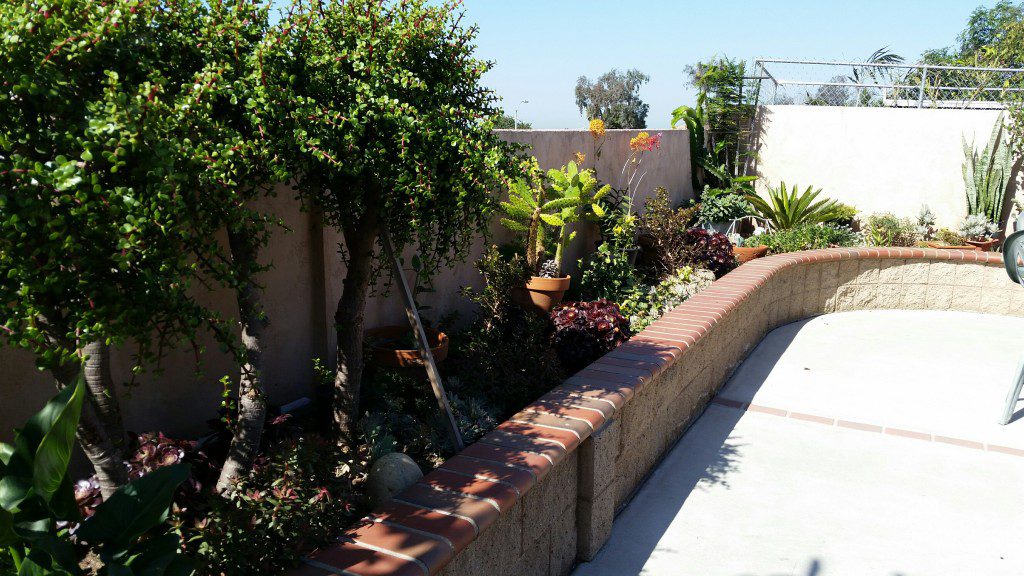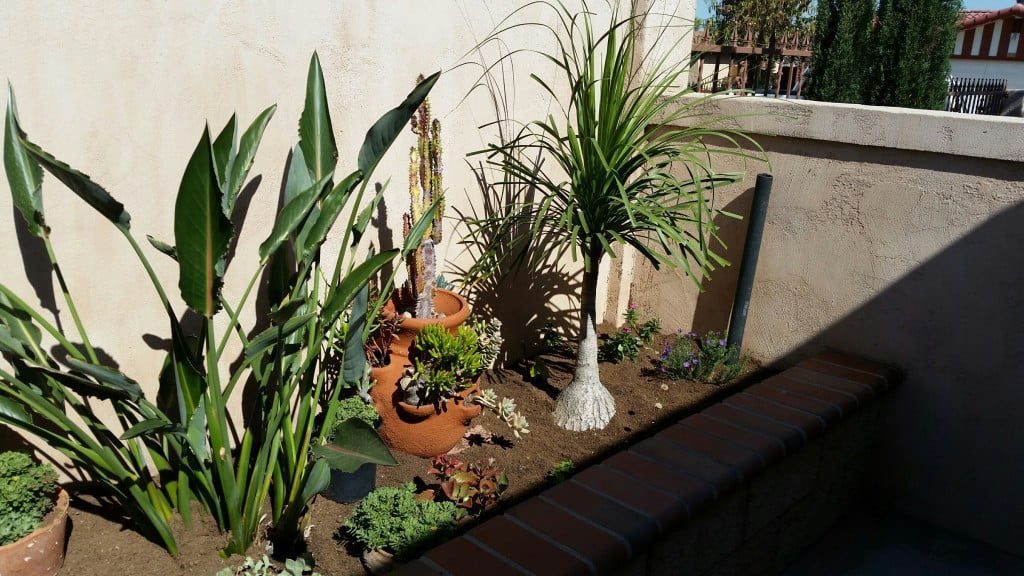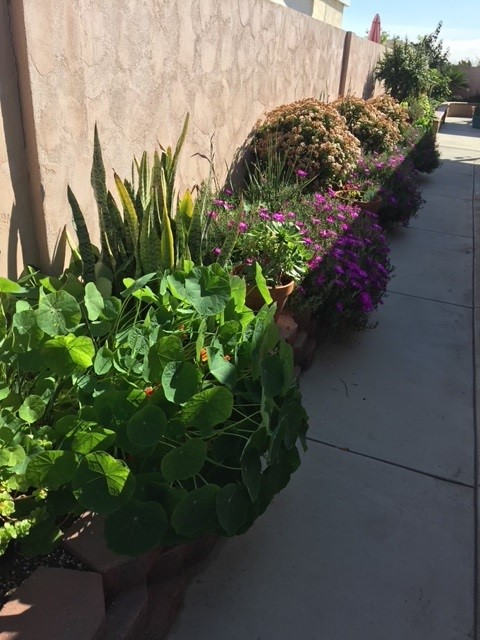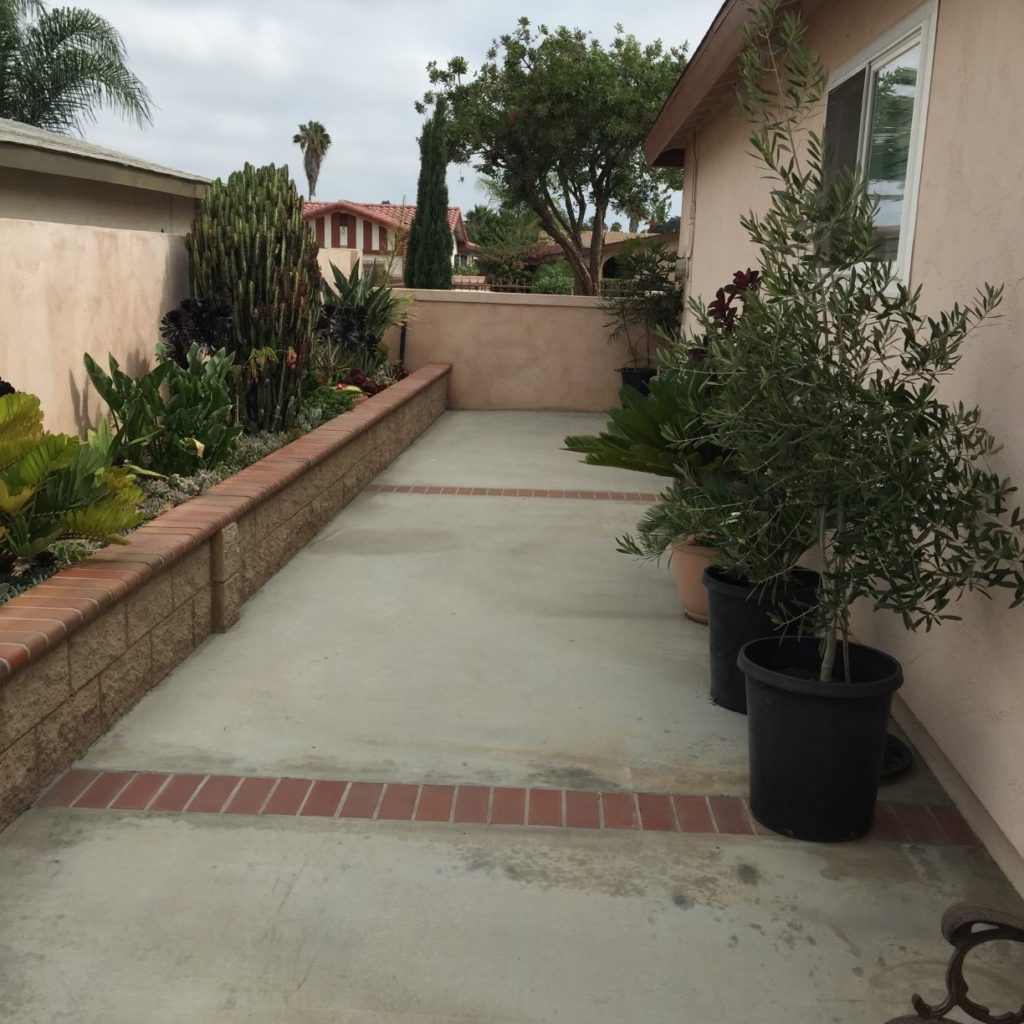Léalo en español
In this post, Marisela P. Herrera, a retiree from San Diego, CA, shares the inspiration behind her garden, and the joy and benefits that it gives her. Many of us overlook the joy and relaxation that comes with a garden, yet, as Marisela explains, gardens can be a source of pleasure. This is also very relevant to the topic of seniors and gardening, as gardens can be a particularly relevant approach for seniors.

Several years ago, when I was visiting my mother-in-law Doña María, I would sometimes find her working in her garden, which I found strange because she was already rather old and had several ailments that came with being that age. Seeing her with a rake or a shovel in her hand seemed weird and I found it hard to see the connection between seniors and gardening.
When I asked her about it, she told me that although she no longer had the same strength she had when she was younger, she couldn’t let her plants die. “You have to sift the earth, give them their vitamins, and make sure that they don’t have any pests. If you don’t do that, the plants will get sad and won’t give you any flowers.”
She would tell me that her garden was a part of her life, that it had cost her many years of work and effort, that it was her source of pleasure: “Time passes by quickly here and it lets me forget about my sorrows, I don’t remember my illnesses and sometimes I forget that I have not eaten.” Afterwards, we would walk around her plants and she would talk to me about the Angel’s Trumpets, the tuberoses, and she would tell me that the geranium had gotten mealybugs, “But just you wait, I’m going to get the gun right now and I’m going to get rid of you guys,” she’d say, and the gun was nothing more than a spray bottle with a soapy mixture that she would prepare herself in order to fight them!

She would also complain about the “pesky snails” that would eat the begonias’ saplings. I have to confess that I was amused to hear her talk… Angel’s Trumpets, tuberoses, begonias and geraniums? I couldn’t tell one from the other. Mealybugs? I had never in my life heard anyone talk about them. I didn’t understand what she would tell me sometimes, it was like she was talking to me in a foreign language, but I would always listen to her attentively with the respect that she deserved. When I was ready to head back home, she would send me off with a few stems that she would cut from a few of her plants that she would call “seedlings”. She would give me a few bulbs and a variety of seeds and—of course—instructions on how I should plant them so that they would sprout.
My priorities were different in those days, I had a family to take care of and there was no time for plants in my daily life, which meant that everything would end up forgotten in a corner of our patio. Years have passed since then. Doña María is no longer with us, my family has grown and become independent, my husband has retired from his job and suddenly I found myself with some free time on my hands that I did not have previously, which I didn’t know what to do with. One day, as I was walking around the patio, I suddenly remembered the seeds and “seedlings” that Doña María would kindly give me from her garden, I thought about the fact that if I had followed her instructions “the trumpets” or the tuberoses would have already sprouted.

I began to feel guilty and full of remorse, and so that very day I decided that I would also have a patio full of flowers just like the one Doña María had. I got straight to work and with the help of my husband—whom, I have to admit, has been a reliable assistant and my right hand—we worked on the task of transforming our patio. We hired a mason who built us a big enough planter and we promptly began to fill it with a grand variety of plants, which we also began to get to know.
We noticed that there are plants that prefer to be under the sun and some that prefer being in the shade; there are some that are invasive and that extend so much that they end up covering the other plants that are next to them. We planted some palm trees and a lot of flowers of different sizes and colors that were in flowerpots that we scattered everywhere. One of our daughters gave us a gazebo that gave our patio a touch of elegance.

Little by little, we transformed that sad patio into a small piece of paradise that keeps us busy all the time. We are always doing something to it. Every morning I go out feeling as if I am a general walking by to check up on her troops, with a rifle in hand—which is the spray bottle with the soapy mixture—ready to fight the enemies that dare to invade my garden; I also found myself bothered by the “pesky” snails when they ended up having a feast on my plants.
It hasn’t been easy, it has costs us many years of effort and dedication, but there is no place for sadness or for stress. You forget about your sorrows and time passes by without you noticing, everything is happy here, when we are sitting under the shade of our gazebo, watching the seasons go by. All of them are beautiful but the one that we like the most is spring because that’s when then the garden is bursting with a grand variety of flowers of every size and color, some more fragrant than the others, but all that nonetheless delight our senses.

From our garden we can see the Pacific Ocean and watch the sunset, which asks nothing of those who see it in those paradisiacal places that exist in other parts of the world, and when night begins to fall we can see—in the distance—the multicolor lights that illuminate T. Town, which is what my husband calls Tijuana, the city just across the border in Mexico.
We can’t ask for more. Thank you Doña María for your teachings, for those very nice talks that we had in your garden: I want you to know that I know the difference now between the geraniums and the begonias and I know about the mealybugs now. Now I perfectly understand what you were trying to tell me at that time because today we are speaking the same language.


Leave a Reply